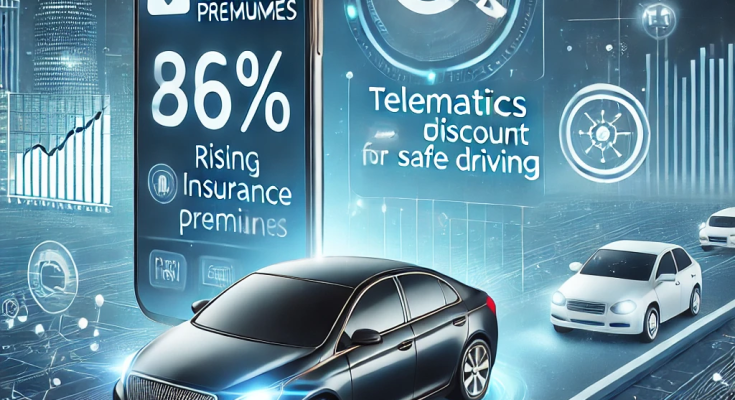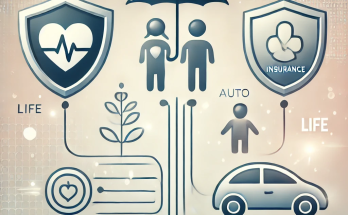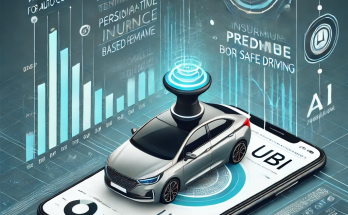Introduction
Auto insurance premiums have surged in 2025, with the average American driver now paying $2,189 annually—a sharp increase from previous years. Rising repair costs, increased accident claims, and inflation have all contributed to higher rates.
However, as premiums climb, usage-based insurance (UBI) and telematics technology are emerging as potential solutions, helping safe drivers lower their insurance costs.
In this article, we’ll explore why auto insurance premiums are rising, how insurers are adjusting their pricing models, and how telematics is reshaping the future of car insurance.
1. Why Are Auto Insurance Premiums Increasing?
Auto insurance rates have risen by more than 10% in the past year, outpacing general inflation. Several key factors are driving these increases:
A. Rising Repair and Replacement Costs
• Modern vehicles come with advanced technology (ADAS, sensors, and AI-powered systems), making repairs more expensive.
• Supply chain disruptions have caused higher costs for car parts and delays in repairs.
• Labor shortages in the automotive repair industry have increased service fees.
💡 Example: The cost to replace a single bumper on a 2025 model with embedded sensors is now 50% higher than in 2020.
B. Increased Accident Rates and Claims
More drivers on the road, combined with higher speeds and distracted driving, have led to a surge in accident claims.
• Post-pandemic driving behavior has resulted in more reckless driving incidents.
• Extreme weather events (hurricanes, floods, and wildfires) have caused record-high claims.
• Medical costs for injury claims have increased, driving up liability coverage expenses.
💡 Example: In 2024, insurers paid over $100 billion in claims due to severe weather-related car damage.
C. Inflation and Rising Cost of Living
As inflation affects the economy, insurance companies are adjusting their pricing to cover higher operational and claim costs.
• Higher medical expenses → Increased personal injury protection (PIP) coverage costs.
• Rising legal fees → More expensive liability claims and settlements.
• Higher vehicle prices → Costlier replacements for totaled cars.
💡 Example: A brand-new compact car that cost $25,000 in 2020 now averages $32,000 in 2025, increasing total insurance payouts.
2. How Are Insurers Adjusting Their Pricing Models?
To cope with rising claim expenses, auto insurers are restructuring their policies and pricing strategies.
A. More Tiered Risk Pricing
🔹 Safe drivers with clean records get lower premiums.
🔹 High-risk drivers (young drivers, DUI offenders) see steeper rate hikes.
🔹 Electric vehicle (EV) insurance rates are being adjusted based on battery replacement costs.
💡 Example: Insurance companies are now offering specific discounts for EVs that have lower maintenance costs compared to gas-powered cars.
B. Higher Deductibles and Stricter Coverage Limits
To manage claim payouts, insurers are:
🔹 Increasing deductible requirements before covering claims.
🔹 Imposing new limits on payouts for medical and property damage.
🔹 Adjusting comprehensive coverage rates based on location and risk factors.
💡 Example: Some insurers have reduced coverage for high-risk areas with frequent car thefts or climate disasters.
3. How Telematics & Usage-Based Insurance (UBI) Can Lower Premiums
With rates increasing, insurers are encouraging drivers to adopt telematics-based insurance models to personalize pricing.
A. What is Telematics Insurance?
Telematics insurance (also called Usage-Based Insurance or Pay-How-You-Drive) uses real-time driving data to calculate premiums.
✅ Safe driving habits = lower rates
✅ Low mileage = reduced costs
✅ Fewer accidents = additional discounts
💡 Example: Companies like Progressive’s Snapshot program offer discounts up to 30% for good driving behavior monitored via telematics.
B. How Does Telematics Work?
📲 Connected Car Apps → Insurers track acceleration, braking, and mileage via mobile apps.
🚗 Onboard Diagnostic (OBD) Devices → A plug-in device monitors vehicle performance.
🌐 Built-in Vehicle Telematics → Many modern cars come with factory-installed tracking systems for insurance discounts.
💡 Example: Tesla’s own insurance program calculates premiums based on Autopilot engagement, speed control, and accident avoidance data.
C. Benefits of Usage-Based Insurance (UBI)
✅ Lower premiums for safe drivers
✅ Encourages better driving habits
✅ Transparent pricing based on actual driving behavior
💡 Example: Drivers who drive less than 10,000 miles per year can save up to 40% on their auto insurance with pay-per-mile programs.
4. What’s Next for Auto Insurance?
The future of auto insurance will focus on:
🔮 AI-Powered Risk Assessment → Machine learning will predict risk profiles with greater accuracy.
🔮 More Pay-Per-Mile Insurance → Drivers will pay based on actual road usage instead of traditional fixed premiums.
🔮 Integration with Autonomous Vehicles → Insurers will adjust policies as self-driving technology improves.
🔮 Climate Risk Adjustments → Regions prone to extreme weather will see higher coverage costs unless new solutions emerge.
💡 Example: Self-driving cars could eventually reduce human error accidents, leading to lower liability insurance premiums.
Auto insurance premiums are at an all-time high due to rising repair costs, accident claims, and inflation, but telematics and usage-based insurance (UBI) offer solutions for lowering costs.
Key Takeaways:
✔️ Average auto insurance premiums have surged past $2,189 annually.
✔️ Factors like repair costs, accident frequency, and inflation are driving price hikes.
✔️ Insurers are adopting tiered risk pricing, higher deductibles, and stricter policy limits.
✔️ Telematics-based insurance can help drivers reduce costs by rewarding safe driving behavior.
✔️ The future of auto insurance will involve AI-powered pricing models, self-driving policy adjustments, and climate risk management.
For drivers looking to save on insurance costs, adopting safe driving habits and telematics-based plans will be key to unlocking lower premiums in 2025 and beyond.



